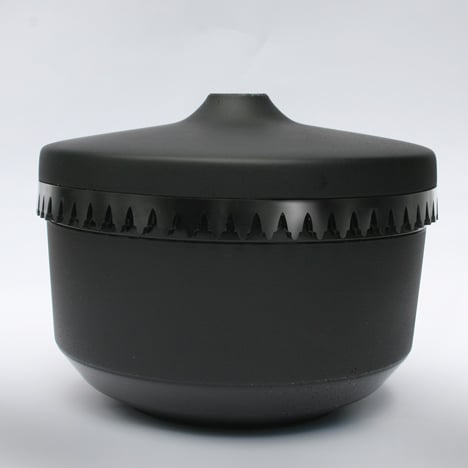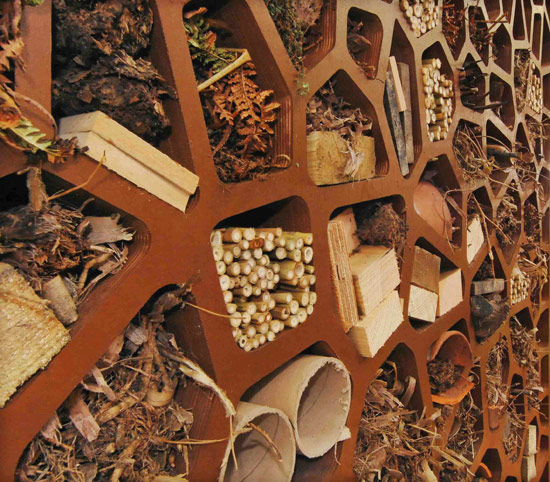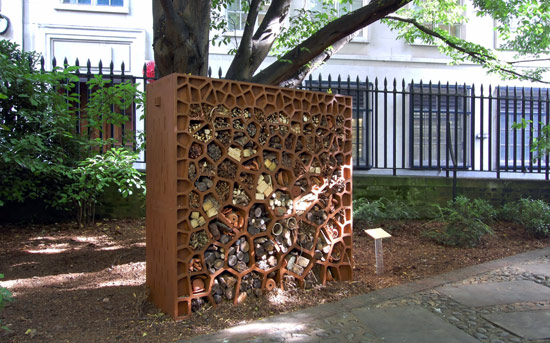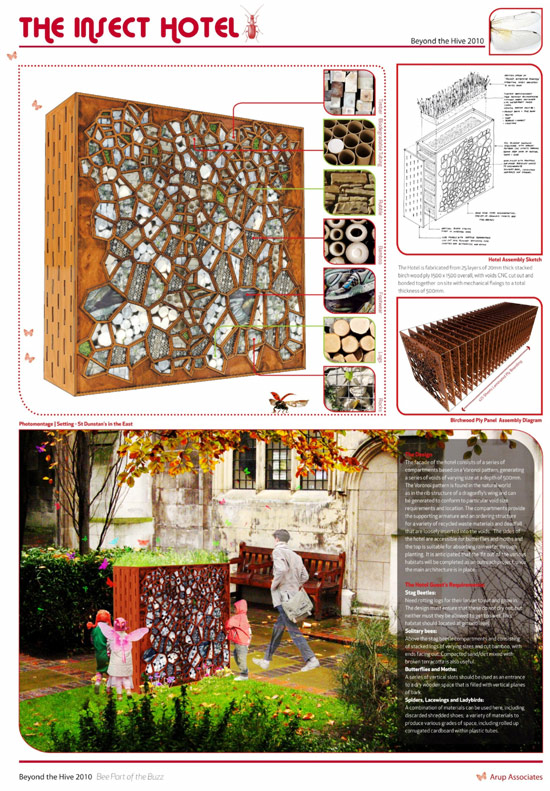Metal Futurism in Bathroom Taps
by: Yanko Design, 2010-07-22 07:16:11 UTC
Welcome to the future of shiny taps! These lovely taps go by the name “Koolhaus” – that’s German, use your superior translation skills to figure out what it means. These Koolhaus taps are meant to inspire forward-thinking minds to conserve. But they make your eyeballs sparkle, too, yes? Such a fabulously almost-fictional look to these taps.
With Koolhaus, you’re able to see your water consumption instantly, right there on the tap. And not only can you see the water used by that tap, nay! The Koolhaus tap comes with multiple flow rate devices which you can install on other bathroom appliances. Each of these Koolhaus devices then send back information to the main tap, where you can view easily through the tap screen. Taptastic!
Designer: Daniel Dobrogorsky





----------
Yanko Design
Timeless Designs - Explore wonderful concepts from around the world!
Yanko Design Store - We are about more than just concepts! See what's hot at the YD Store!
Couple Lives Trash Free for One Year
by: TreeHugger Design, 2010-07-14 10:05:15 UTC
 Image: Week 52, Green Garbage Project
Image: Week 52, Green Garbage Project
Okay, "trash free" technically only applies if you consider that the small box of non-recyclables accumulated by Amy and Adam Korst now counts as collectible. The Korsts write in their blog,
Green Garbage Project: "Oddly enough, this has become enough of a talking piece that we're unlikely to ever throw this stuff away."
After 52 weeks trying to live absolutely trash-free, the Korsts have inventoried the year's "failures". The f...
Read the full story on TreeHugger
Method Laundry Detergent's Radical Innovation Wins International Design Excellence Award
by: TreeHugger Design, 2010-07-20 10:17:09 UTC
 All images via www.methodlaundry.co.uk
All images via www.methodlaundry.co.uk
Along with the great news that
Method Laundry Detergent has just recently been launched in the UK (yes our clothes are already cleaner) we hear that Method's innovative pump action laundry detergent bottle has won the
International Design Excellence Award (IDEA) for its behaviour changing design.
Read the full story on TreeHugger
The Eco Friendly Pratt Home Office Collection from West Elm
by: TreeHugger Design, 2010-07-22 16:41:59 UTC

Now that the home office is the
new staple of the American home, let's make it as green and good-looking as possible. You've probably already admired West Elm's collections of elegant home furnishings, but the Pratt line is especially ogle-worthy. Born as a design competition between freshly-graduated students of the Pratt Institute, the guidelines were for an affordable, eco-friendly, home office collection. Looks like they really hit the mark with this chair, wall shelf, desk, file cabinet, and LED lamp (check out pics below)....
Read the full story on TreeHugger
Urban Transducer Skyscraper gets powered by noise
by: Ecofriend, 2010-07-19 10:59:40 UTC

Eco Factor: Sustainable mixed-use skyscraper powered by noise and wind energy.
The rise in the number of cars on the roads has not only increased air pollution but has also added noise. Seemingly harmless, noise is a form of energy that is usually absorbed as heat by the surroundings. A team of American designers including Ryan Browne, Nathanael Dunn, Daniel Nelson and Benjamin Scholten are trying to utilize noise to generate usable energy. The designers have proposed a sustainable skyscraper for Chicago that can be powered by renewable energy including noise.

Dubbed Urban Transducer, the mixed-use skyscraper will include restaurants, offices, residences and public spaces. The skyscraper features facades laden with acoustic reverberation transducers that can convert noise into electricity for use within the building. The panels are adjusted to react to specific wavelengths of present frequencies.

Moreover, the panels remember the most commonly occurring frequencies and their locations, allowing it to preemptively adjust in order to produce maximum efficiency. To assist noise-produced-electricity, micro wind turbines have also been integrated throughout the skyscraper, with a majority of turbines being concentrated in areas of greatest efficiency – on the top of the tower, along the train tracks and above the roads.
Via: Evolo


 MIT develops phenomenon to produce cheaper fuel cells
MIT develops phenomenon to produce cheaper fuel cells
by: Ecofriend, 2010-07-20 06:27:02 UTC

Eco Factor: New phenomenon helps in the production of high efficiency fuel cells.
MIT researchers have successfully found a way which could help in production of high efficiency fuel cells. The researchers investigated a phenomenon called Lattice strain which refers to a slight, atomic-level displacement in the structure of a material.
They gained control over lattice strain process in a material called yttria-stabilized zirconia to increase its conductivity by almost four times. What is even more significant is the fact that energy boost took place at a relatively low temperature of 400 degree K which could significantly reduce the cost of solid oxide fuel cells.
The new configuration increases efficiency and stability and could reduce or practically eliminate the performance and durability issues that currently hinder any technological progress.
Via: Clean Technica


 Panasonic envisions sustainable self-powered homes by 2020
Panasonic envisions sustainable self-powered homes by 2020
by: Ecofriend, 2010-07-20 06:31:52 UTC

Eco Factor: Panasonic hopes to provide renewable energy generators for every home by 2020.
After merging with Sanyo, Japanese giant Panasonic believes that by the year 2020 every home will produce enough clean energy for its own needs. The company has talked about plans being put in place to step up change to enable homes to run off-grid within the next decade.
Referred to as GT 12 (Green Transformation 12), the new plan will focus on research and development of eco-friendly technologies for the future. Panasonic is looking at every aspect of energy production and energy storage, which will help them become dominant in energy management.
Panasonic has already developed a laptop prototype that uses a DMFC to offer five hours of battery life on a 50cc dose of liquid methanol. The company now believes that time has come when houses will become autonomous in terms of technology and consumers will generate their own energy using solar panels or fuel cells.
Via: Tech Radar


 Earn/Urn by Neil Conley
Earn/Urn by Neil Conley
by: Dezeen, 2010-07-19 16:30:46 UTC

Design graduate Neil Conley has made a series of funerary urns from reclaimed carbon fibre. (more…)
Plastiki Nears End of Journey
by: Eco Geek Latest, 2010-07-13 15:33:15 UTC

The boat made out of 12,500 recycled plastic bottles is nearing the end of its journey to raise awareness of the large amounts of plastic polluting our oceans.
The Plastiki team is now at the island of Kiribati, just a short way from their final destination of Sydney. The boat has sailed almost 11,000 miles over 115 days, traveling across the Pacific and through the Great Pacific Garbage Patch. The boat is a lesson in sustainability and renewable energy in itself, including solar panels, wind turbines, bicycle generators, a urine to water recovery system, hydroponic hanging gardens and the entire boat can be recycled when the trip is through.
Hopefully the team has achieved their goal of bringing attention to the garbage patches forming in the oceans. Scientists keep discovering more and the tide of plastic seems to be growing all the time.
via Earth 911
arup associates: insect hotel
by: Designboom - Weblog, 2010-07-13 11:00:00 UTC
 'arup associates' insect hotel'
'arup associates' insect hotel'
all images courtesy of arup associates
london-based
arup associates have won the top golden beetle prize for their design
of 'insect hotel' in the competition hosted by british land and the city of london, '
beyond the hive'.
the brief called for a sustainable and creative insect habitat for the city of london parks.
the bio-mimetic design is constructed out of 25 layers of 20 mm-thick birch plywood.
the irregular voids are cut out using a CNC machine and loosely bonded together on site
with mechanical fixings. the 1500 mm x 1500 mm hotel's facade is influenced from
the voronoi pattern, an organic system of irregular shapes often found in nature, such as the wings
of a dragonfly. the 500 mm-deep compartments provide an armature for the recycled waste materials,
each compacted with different types of deadfall to cater to different types of insects:
stag beetles require rotting logs for their larvae to eat and grow in, while butterflies and moths
prefer a series of vertical slots using dry wooden pieces and tree barks.
 different materials are used for different species
different materials are used for different species

 design scheme
design scheme
 designers with the insect hotel
designers with the insect hotel





Comments by our Users
Be the first to write a comment for this item.